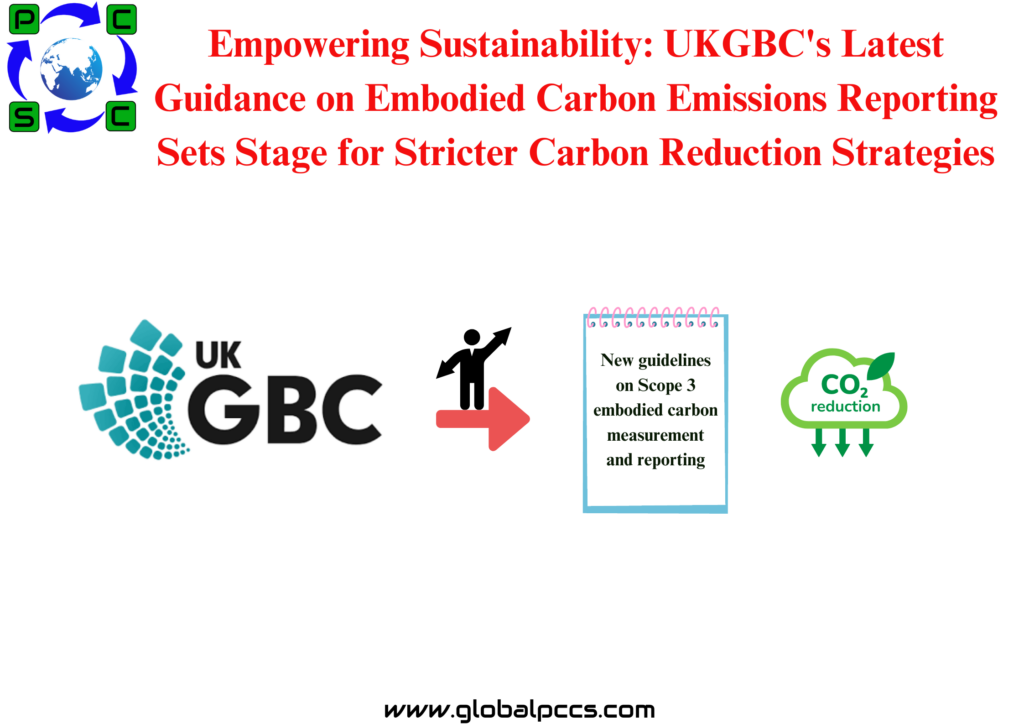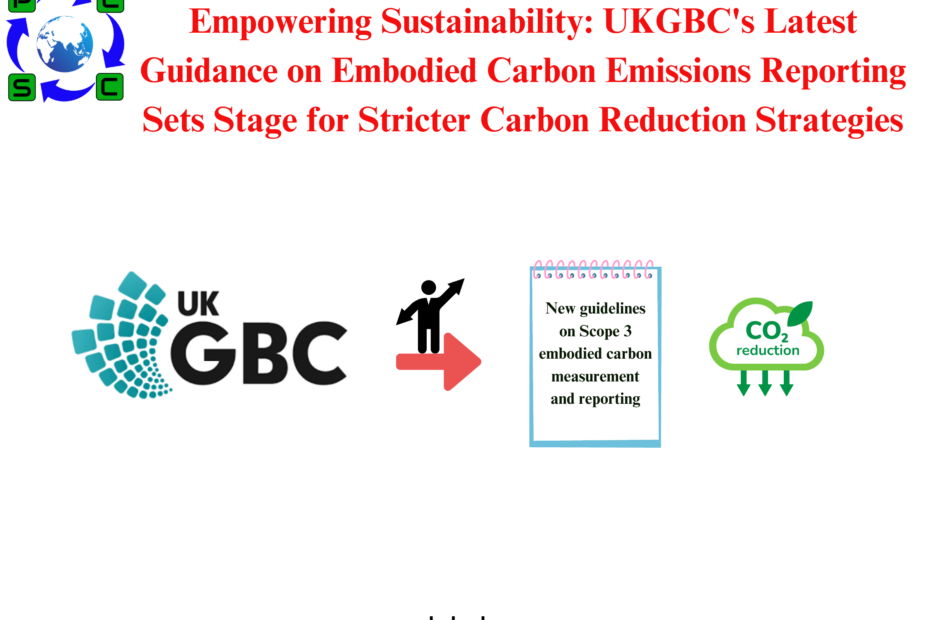 New guidelines on Scope 3 embodied carbon measurement and reporting have been released by the UK Green Building Council (UKGBC) for built environment stakeholders. A company’s indirect embodied carbon emissions make up between 80 and 95 percent of its whole value chain footprint. This is represented by scope 3. In contrast to fragmented initiatives, the guideline reframes Scope 3 reporting as a single approach that outlines a strategy for logically aligning embodied carbon assessments.
New guidelines on Scope 3 embodied carbon measurement and reporting have been released by the UK Green Building Council (UKGBC) for built environment stakeholders. A company’s indirect embodied carbon emissions make up between 80 and 95 percent of its whole value chain footprint. This is represented by scope 3. In contrast to fragmented initiatives, the guideline reframes Scope 3 reporting as a single approach that outlines a strategy for logically aligning embodied carbon assessments.
The guidance includes:
- How could embodied carbon assessments be used by developers, owners, contractors, investors, lenders, and facilities managers to report Scope 3 emissions over the course of an asset’s lifetime.
- How Architects, Engineers and other Professional Services should adopt a project-based emissions disclosure for embodied carbon, due to the challenge of designing embodied carbon emissions that do not easily fit within the current GHG Protocol.
The most popular method for organizations to thoroughly evaluate the whole carbon footprint of their operations is the GHG Protocol, which lays out a uniform framework and instruments for measuring emissions. In the absence of obligatory guidelines, UKGBC observes that Scope 3 reporting at the organizational level is usually carried out independently from project-level embodied carbon assessments.
This approach hinders the ability to think holistically and increases the possibility of redundant labor. Organizations can benefit from increased detail in their GHG Protocol reporting and have greater clarity on the relationship between building construction and operation and organizational emissions reduction efforts with UKGBC’s proposal to use embodied carbon assessments to support Scope 3 reporting.
The integration of embodied carbon assessments directly into Scope 3 reporting is explored in UKGBC advice as a potential simpler and more centralized alternative compared to standard GHG reporting processes. The paper offers guidance on how to utilize embodied carbon assessments to report Scope 3 emissions over the course of an asset’s lifetime to developers, owners, contractors, investors, lenders, and facilities managers.
As embodied carbon emissions from projects created by engineers and architects are not included in the Scope 3 framework, there is less accountability and transparency about the impact of design companies’ emissions. Therefore, in order to make sure that they are taking greater responsibility for the embedded carbon emissions that emerge from their designs, UKGBC advises engineers and architects to adopt a project-based emissions declaration. Design-based embodied carbon disclosure can also assist engineers and architects in demonstrating the value that sustainable design can provide to developers, contractors, investors, and lenders.
The bulk of projects in the built environment sector would require whole life carbon assessments in order to follow the strategies described in this study.
In light of this, UKGBC urges the government to require the measurement and reporting of whole life carbon for projects with more than ten homes or an internal space of more than 1,000 m². Legal restrictions on the upfront embedded carbon emissions must come next, with further revisions and tightening required.








 Authorised IMDS & CDX Training & Consulting partner for
Authorised IMDS & CDX Training & Consulting partner for






